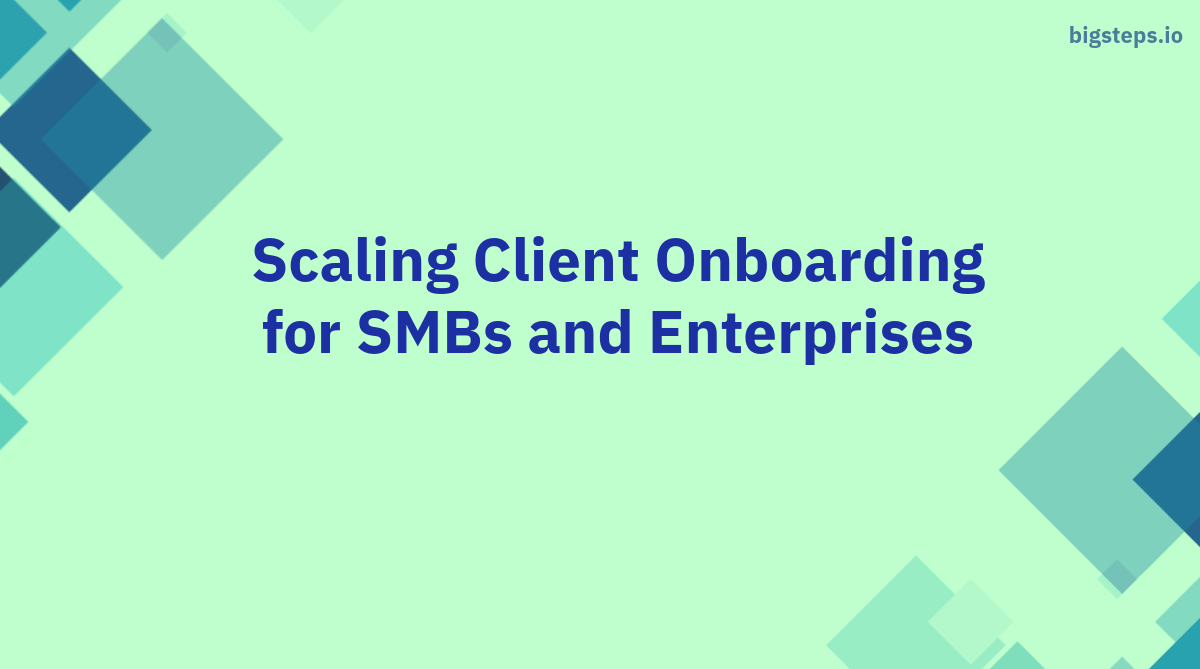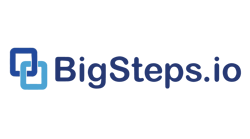Scaling Client Onboarding for SMBs and Enterprises
Read Time 6 mins | Written by: Vaibhav Awachat

Have you ever encountered the situation where your team spends the same amount of time and resources on small and medium-sized business (SMB) customers as they do on enterprise customers?
It can be frustrating when a lot of fire-fighting feature requests come from customers, leaving you unable to focus your resources on the customers who have significant growth potential. Additionally, if your product requires managed onboarding, you can't change the fact that you will need someone to guide the customers through the next steps whether they are an SMB or an enteprise.
Observations & Challenges with SMBs and Enterprise Clients in SaaS Implementation
- SMB has active team members who are capable of executing tasks, provided there are clear instructions and a knowledge base tailored to their use cases. Initially, setting up one or two core workflows demands effort on your part.
- Your team ends up investing the same amount of time and resources in customers who pay significantly less and have lower growth potential compared to strategic customers or those who have paid premium for your service. The challenge lies in providing a top-notch experience to all customers as a customer success team irrespective of the amount they paid.
- You've implemented a Kanban board on certain tools to track the status of onboarding and implementations, but your team must update it manually. Each time you check for updates, it's outdated, necessitating individual progress checks with team members. As a leader, lacking visibility into ongoing and pending tasks makes it extremely challenging. Moreover, each customer's unique needs make establishing a standardized process difficult.
- Enterprise customers may present particular challenges during the implementation of new SaaS software due to their complex requirements, extensive decision-making processes, and sometimes rigid organizational structures. Understanding and accommodating these dynamics is crucial for successful deployment and long-term satisfaction & often requires dedicated onboarding specialist in your team.
When we say, "Let's implement digital customer success," or scale customer success for SMB customers, or scale customer success processes for 70% of our paying customers, we aim to refocus our human resources on high-value customers with high growth potential in a shorter time frame.
Implementing Digital Customer Success in Customer Onboarding
Let's break it down, what is going on.
- We won't know how many customers will close and when they will close. We have some estimates based on the previous months, like 5-7 customers per month.
- We won't know what type of customers are being closed? SMB? Enterprise? Will it take 2 weeks or 90 days?
- When the customer is closed, the AE needs to fill up information like the Sales-CS handoff document with all that has been discussed with the customers to avoid repeating the same things.
- Someone will be designated who is supposed to analyze the workload of CSM or onboarding team, consider who is going on leave / who is available, have a chat with the AE, and identify the point person.
- The point person would go through all the details on the CRM, AI meeting notes & come up with a plan on what all things need to be implemented for the customers.
- Sometimes the CSM would have an onboarding plan - a strategic plan on how to onboard the customers use-case by use-case, otherwise, some would prefer an implementation plan on what all things need to be done.
- The strategic plans go into the kick-off deck - understand any milestones that we need to achieve, training schedule, PoC for integrations & requirements. A kick-off meeting is scheduled.
- Then we move to prepare an exhaustive list of tasks for both the parties involved to go through the implementations. This is the most chaotic experience because execution depends on your customers' stakeholders & internal stakeholders. The CSM / Onboarding specialists are now project managers while many have not received formal training on project management.
- A lot of time goes into following up with the customers to check if they have achieved, and then if something is blocked, and then open another thread with the internal team. Juggle between multiple tools like CRM, Task list, Scope Document, list of all the documents that you have already received, and go through what is pending for the customer. Ask all the stakeholders & share updates with your customers.
- There is scope creep, holidays, new projects that keep happening as you make progress.
This process is repeated again and again -
- We lose sight of what is part of standard onboarding & what is added to a customer's.
- During escalations, we don't have any audit trail on holding the customer accountable.
- We don't know what is pending across all the customers.
- We don't have visibility across the onboarding to give feedback to the Product & Engineering team.
A purpose-built customer onboarding tool automates 70%-80% of these tasks and allows you and your team to focus on the desired outcomes of your customers and have strategic conversations.
Framework for Scaling Customer Onboarding
The process begins with standardizing your approach, which involves templatizing your complete process based on what you already know & capturing the deviations when you execute the process.
We utilize a framework known as the PDSA (Plan-Do-Study-Act) cycle.
What is PDSA Cycle?
The PDSA cycle is a systematic process for gaining valuable learning and knowledge to facilitate the continual improvement of a product, process, or service.
Plan
We initiate the process with the planning phase, where we templatize the project plan, document templates, stakeholder templates, summary templates, and project update templates.
BigSteps assists you in building and organizing all these templates in a centralized plan and links it to your CRM to automatically pull information and prefill it.
Do
Then, by creating a project plan using the templates, you can identify the time & efforts required to complete the project, the resources involved and the ability to automatically follow up without the need for an individual's intervention. This provides visibility for day-to-day operations, free up your teams time on focusing on work that influence growth.
Think of it as a single source of truth for you and your customers to track the progress of the project.
BigSteps automates the entire process of creating projects from your CRM (Salesforce/HubSpot) to allocating resources, computing efforts, selecting the right templates, and orchestrating the complete onboarding process.
Study
As the project is executed, tasks within the project are marked as completed, and the status is automatically updated in your kanban board. This is crucial for scaling onboarding. As tasks are marked as completed, customers are moved from one stage to another automatically, similar to how companies manage their deal pipeline.
The execution phase involves tasks being completed by your team and customers. Build the system to ensure that you have high-level visibility on areas requiring your attention, hiring decisions, and process improvement decisions.
BigSteps' early warning systems integrations comes up 100s of pre build alerts to notify your team when they need to intervene to keep the project on track.
Act
Once the project is completed, analyze what was delayed and what started on time. Identify what worked well for the project and use the best practices to update the template for the next project. This is how you improve the onboarding process, just like your product is continuously improving, so should your onboarding services.
This approach helps identify bugs, such as what consistently delays project delivery, feature requests, and what new tasks and updates are needed to improve delivery time and customer experience.
With BigSteps you can easily update templates
Elevating Customer Experience with BigSteps
Just as Jira & Monday.com a purpose built project porfolio management tool revolutionized project management for product teams by making it easy to manage sprints & backlogs. BigSteps is a purpose built software for onboarding & implementation teams to streamline service delivery from sales-cs hand-off to go live.
Schedule a demo to discover how BigSteps can optimize your onboarding processes, elevate customer experiences, and maximize resource efficiency. Streamline your onboarding journey without compromising on quality or draining valuable resources.
